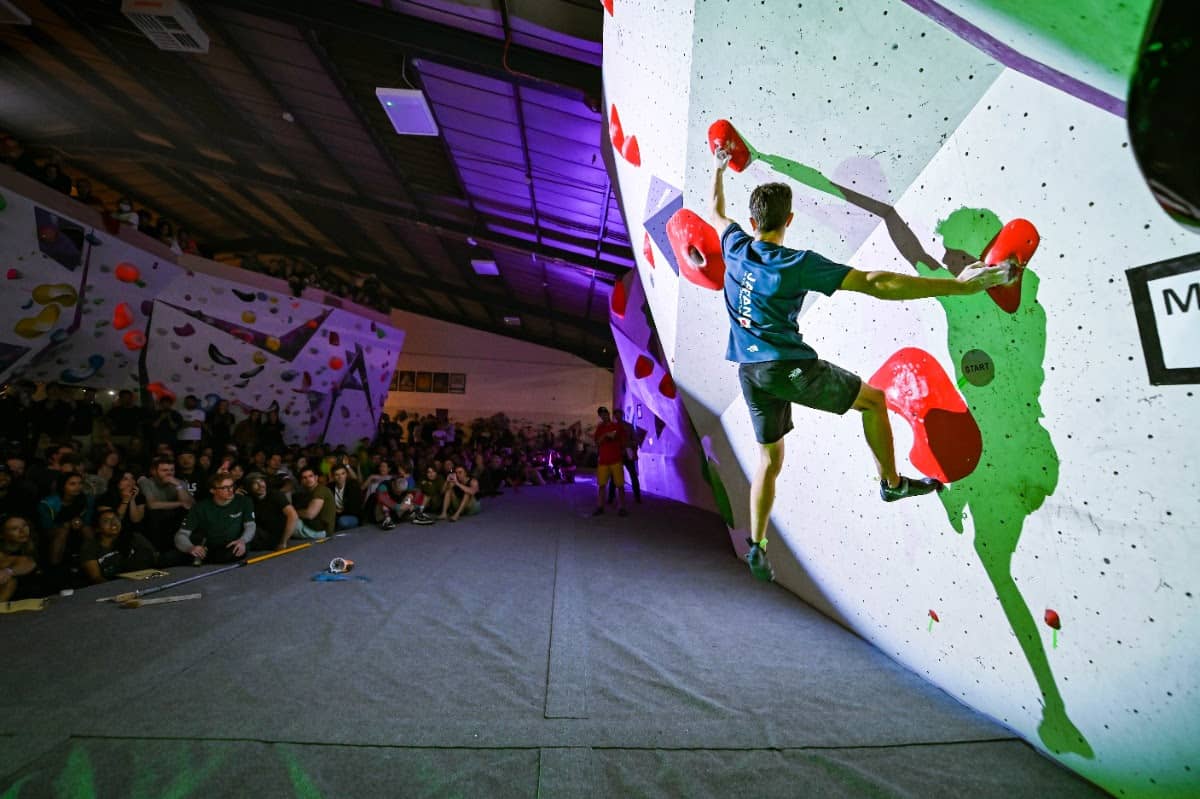Nestled in the vibrant heart of London, the London Climbing Centres stand as a beacon for adrenaline seekers.
Here, Ollie Rooke, the Marketing Manager who’s not only a guru in climbing culture but also an enthusiast himself, walks us through the exhilarating disciplines of sport climbing.
Whether you’re a newbie looking to learn the ropes or a seasoned climber aiming to refine your skills, this is your playground.
Lead Climbing: Not for the Faint of Heart
Lead climbing is where you put your grit to the test. Imagine yourself facing a towering 15-meter wall, riddled with daunting overhangs, and you’ve got just six minutes to make your mark.
Here, climbers are tethered to a lifeline managed by a belayer below, who keeps the rope tight and the falls safe.
You climb, clip, and repeat, threading your way up, securing your rope to quickdraws anchored in the wall.
Every hold you grasp earns you points, and every move counts. The higher you climb within the time limit, the better your score.
It’s an ultimate test of endurance, precision, and mental strength—one wrong move could end your ascent.
Bouldering: Chess on a Vertical Board
Then there’s bouldering, the cerebral sibling in the climbing family. This is where climbers forego ropes and harnesses for a dance on shorter walls, where falls are caught by thick, forgiving crash pads.
Bouldering challenges are known as ‘problems’ because each route is a puzzle that demands not just physical strength but tactical thinking.
The walls may only reach 4.5 meters, but the routes are tough, requiring climbers to pull off complex moves that test their strength, agility, and problem-solving skills. In competitions, climbers try to conquer four such problems, scoring points based not just on reaching the top but on how many tries they take to get there.
Speed Climbing: Race Against Gravity
And let’s not forget speed climbing—the sprinter’s arena in the climbing world. Two climbers, side by side, race up a 15-meter wall following an identical route.
It’s fast, furious, and breathtakingly simple: the fastest to the top wins. Each climber is supported by an AutoBelay system that ensures they’re safe, constantly taking in slack as they ascend at breakneck speeds.
How to Start Climbing
Getting into climbing is easier than you might think. Across the UK, climbing walls welcome novices and pros alike.
At London Climbing Centres, you can simply pop in, watch an induction video, and begin your climb.
However, for a truly solid start, consider signing up for a beginner’s coaching session.
These sessions, offered throughout the week, are perfect for learning the basics under the watchful eye of experienced instructors. They’ll cover everything from basic grip techniques to safety protocols.
Bouldering is particularly recommended for first-timers. It’s straightforward—just you, the wall, and your climbing shoes (which you can rent on-site). No ropes, no fuss, just pure climbing joy.
Climbing Lingo to Sound Like a Pro
Getting into climbing also means getting into its lingo. Here’s a quick guide:
- Flash: Nailing a route on your first go.
- Boulder Problem: A route in bouldering, each a unique challenge.
- Dyno: A dynamic leap for the next hold, often losing contact with the wall momentarily.
- Bonus Hold: A strategic hold in bouldering that can score extra points.
- Crux: The toughest section of the climb.
- Belayer: Your lifeline on the ground when lead climbing.
Drop by London Climbing Centres for a firsthand experience of these dynamic disciplines.
Whether you’re looking to test your limits or just have fun, this is where your climbing adventure begins.





